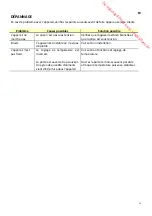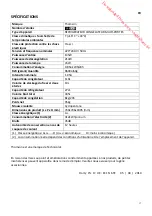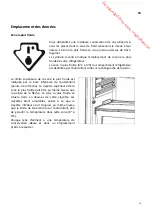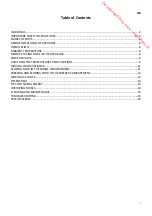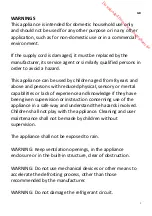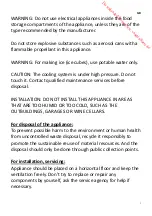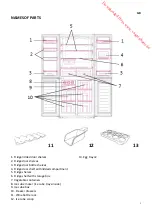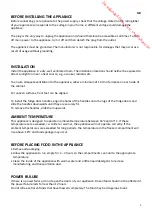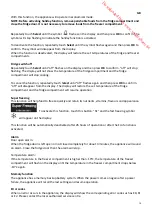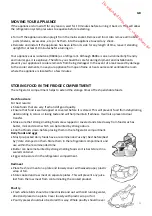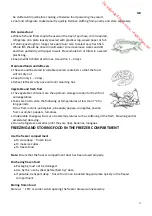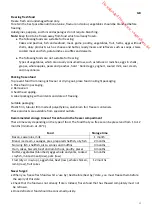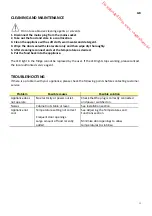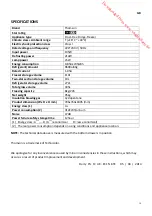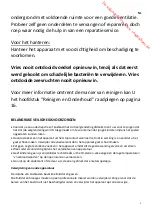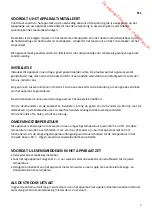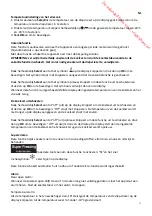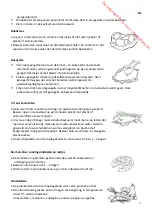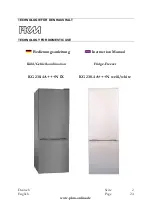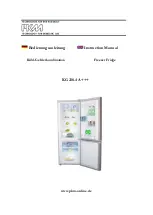
GB
12
be
stuffed
until
just
before
cooking,
otherwise
food
poisoning
may
result.
Cool
and
refrigerate
cooked
poultry
quickly.
Remove
stuffing
from
poultry
and
store
separately.
Fish
and
seafood
Whole
fish
and
fillets
should
be
used
on
the
day
of
purchase.
Until
required,
refrigerate
on
a
plate
loosely
covered
with
plastic
wrap,
waxed
paper
or
foil.
If
storing
overnight
or
longer,
take
particular
care
to
select
very
fresh
fish.
Whole
fish
should
be
rinsed
in
cold
water
to
remove
loose
scales
and
dirt
and
then
patted
dry
with
paper
towels.
Place
whole
fish
or
fillets
in
a
sealed
plastic
bag.
Keep
shellfish
chilled
at
all
times.
Use
within
1
–
2
days.
Precooked
foods
and
leftovers
These
should
be
stored
in
suitable
covered
containers
so
that
the
food
will
not
dry
out.
Keep
for
only
1
–
2
days.
Reheat
leftovers
only
once
and
until
steaming
hot.
Vegetable
and
fresh
fruit
The
vegetable
containers
are
the
optimum
storage
location
for
fresh
fruit
and
vegetables.
Take
care
not
to
store
the
following
at
temperatures
of
less
than
7°C
for
long
periods:
Citrus
fruit,
melons,
aubergines,
pineapple,
papaya,
courgettes,
passion
fruit,
cucumber,
peppers,
tomatoes.
Undesirable
changes
will
occur
at
low
temperatures
such
as
softening
of
the
flesh,
browning
and/or
accelerated
decaying.
Do
not
refrigerate
avocados
(until
they
are
ripe),
bananas,
mangoes.
FREEZING
AND
STORING
FOOD
IN
THE
FREEZER
COMPARTMENT
Use
the
freezer
compartment
To
store
deep
‐
frozen
food.
To
make
ice
cubes.
To
freeze
food.
Note:
Ensure
that
the
freezer
compartment
door
has
been
closed
properly.
Purchasing
frozen
food
Packaging
must
not
be
damaged.
Use
by
the
‘use
by
/best
before/best
by/’
date.
If
possible,
transport
deep
‐
frozen
food
in
an
insulated
bag
and
place
quickly
in
the
freezer
compartment.
Storing
frozen
food
Store
at
‐
18°C
or
colder.
Avoid
opening
the
freezer
drawers
unnecessarily.
Downloaded from www.vandenborre.be



